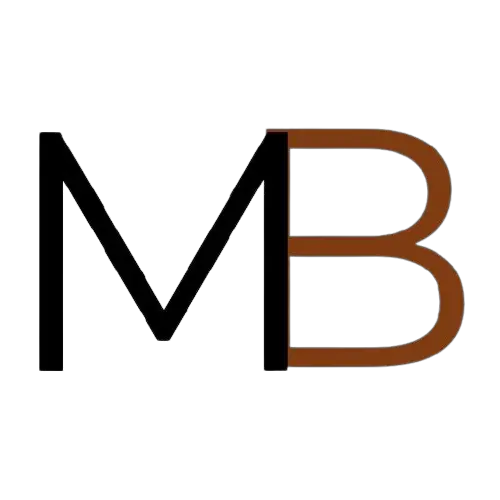How to Measure Bra Size in India? o measure your bra size, you will need a flexible tape measure and a mirror. Here’s how to do it: note always prefer branded bras & LINGERIE for a perfect fit. if you are measuring for a bra for a blouse also read this blog on HOW TO MEASURE BLOUSE SIZE. FOR PERFECT FIT.
- Wear a non-padded bra and stand in front of a mirror.
it is important to wear a non-padded bra when taking your measurements because padded bras can alter the measurement of your bust and rib cage. Wearing a non-padded bra will give you a more accurate measurement of your bra size. It’s also helpful to stand in front of a mirror when taking your measurements so that you can make sure the tape measure is level and not too tight or too loose.
- Wrap the tape measure around your rib cage, just below your bust. Make sure the tape measure is level and not too tight or too loose. Write down the measurement in inches.
To measure your rib cage, wrap the tape measure around your rib cage just below your bust. Make sure the tape measure is level, not too tight, and not too loose. You should be able to comfortably fit one or two fingers under the tape measure. Write down the measurement in inches. This measurement will be used to determine your band size.
Next, measure around the fullest part of your bust. Make sure the tape measure is level and not too tight or too loose. Write down the measurement in inches. This measurement will be used to determine your cup size.
To determine your bra size, subtract your rib cage measurement from your bust measurement. The difference will determine your cup size. Refer to the chart I provided in my previous message for a guide to cup sizes.
It’s important to note that bra sizes can vary between brands and styles, so you may need to try on a few different sizes to find the one that fits you best.
- Measure around the fullest part of your bust. Make sure the tape measure is level and not too tight or too loose. Write down the measurement in inches.
To measure the fullest part of your bust, wrap the tape measure around your bust at the widest point. Make sure the tape measure is level and not too tight or too loose. You should be able to comfortably fit one or two fingers under the tape measure. Write down the measurement in inches.
This measurement, along with your rib cage measurement, will be used to determine your bra size. To determine your bra size, subtract your rib cage measurement from your bust measurement. The difference will determine your cup size. Refer to the chart I provided in my previous message for a guide to cup sizes.
It’s important to note that bra sizes can vary between brands and styles, so you may need to try on a few different sizes to find the one that fits you best.
- Subtract your rib cage measurement from your bust measurement. The difference will determine your cup size.
To determine your cup size, subtract your rib cage measurement from your bust measurement. The difference will determine your cup size according to the following chart:
- If the difference is less than 1 inch, your cup size is AA.
- If the difference is 1 inch, your cup size is A.
- If the difference is 2 inches, your cup size is B.
- If the difference is 3 inches, your cup size is C.
- If the difference is 4 inches, your cup size is D.
- If the difference is 5 inches, your cup size is DD or E.
- If the difference is 6 inches, your cup size is DDD or F.
- If the difference is 7 inches, your cup size is G.
- If the difference is 8 inches, your cup size is H.
For example, if your rib cage measurement is 34 inches and your bust measurement is 36 inches, your bra size would be 34B.
It’s important to note that bra sizes can vary between brands and styles, so you may need to try on a few different sizes to find the one that fits you best.
How do I know if I am wearing the right bra size?
There are a few signs that a bra may not fit properly:
- The band is too loose: If the band is too loose, it will not provide enough support. You should be able to fit two fingers under the band comfortably, but it should not be loose enough to ride up your back.
- The cups are too small: If the cups are too small, your breasts may spill out over the top or sides of the bra. You should fill the cups completely, without any gaps or wrinkles.
- The straps are too loose: If the straps are too loose, they may slide off your shoulders or dig into your skin. They should be snug enough to stay in place, but not so tight that they cause discomfort.
- The bra is uncomfortable: A bra that fits properly should be comfortable to wear. If you are constantly adjusting the bra or find it uncomfortable, it may not fit properly.
To find a bra that fits properly, you may want to try on several different sizes and styles. It is also a good idea to get measured by a professional bra fitter to determine your correct size.
How do I know if the band on my bra is secure enough?
There are a few ways to determine if the band of a bra is firm enough:
- The band should be snug but not tight: You should be able to fit two fingers under the band comfortably, but it should not be loose enough to ride up your back.
- The band should provide most of the support: A bra’s band should provide most of the support, not the straps. If the straps are doing most of the work, the band is likely too loose.
- The band should not dig into your skin: A too-tight band can cause discomfort and leave marks on your skin. Make sure the band is snug but not too tight.
- The band should be level with the front of the bra: The band should sit level with the front of the bra, not ride up in the back.
How can I prevent my bra straps from falling down?
There are a few possible reasons why your bra straps may be falling down:
- The straps are too loose: If the straps are too loose, they may slide off your shoulders. Make sure the straps are tightened enough to stay in place, but not so tight that they cause discomfort.
- The bra cups are too small: If the cups are too small, your breasts may not be fully supported, causing the straps to slip off your shoulders. Try a bra with larger cups or a different style with more coverage.
- The bra band is too loose: If the band is too loose, it may not provide enough support, causing the straps to slip off your shoulders. Try a bra with a firmer band or a smaller size.
- The bra style is not suitable for your body type: Some bra styles, such as balconette or plunge bras, may not provide as much coverage or support as other styles. If you have larger breasts or wide-set shoulders, you may want to try a bra with wider straps or more coverage.
Why does the band on my bra keep riding up?
If the band of your bra is riding up, it may not be fitting properly. A bra’s band should sit level with the front of the bra and provide most of the support, not the straps. There are a few possible reasons why the band of your bra may be riding up:
- The band is too loose: If the band is too loose, it will not provide enough support and may ride up your back. You should be able to fit two fingers under the band comfortably, but it should not be loose enough to ride up.
- The cups are too small: If the cups are too small, your breasts may not be fully supported, causing the band to ride up. Try a bra with larger cups or a different style with more coverage.
- The bra style is not suitable for your body type: Some bra styles, such as balconette or plunge bras, may not provide as much coverage or support as other styles. If you have a full bust or wide-set breasts, you may want to try a bra with a full cup or more coverage.
Can a bra that leaves an imprint on my skin be the correct size?
A bra that leaves an imprint on your skin is likely too tight and may be causing discomfort. A bra’s band should be snug but not tight, and it should not dig into your skin or leave marks. If the band of your bra is too tight, it may not provide enough stretch and mobility, which can lead to discomfort.
There are a few other signs that a bra may be too tight:
- The cups are wrinkled or bulging: If the cups are wrinkled or bulging, it may indicate that the bra is too small.
- The straps are digging into your skin: If the straps are digging into your skin or causing discomfort, it may indicate that the bra is too small or the straps are too tight.
- The band is riding up: If the band is riding up, it may indicate that the bra is too small or the band is too loose.
How can I ensure the cups of my bra fit correctly and prevent spillage?
To avoid spillage from the cups of your bra, it is important to choose a bra that fits properly and provides enough coverage and support for your breasts. Here are a few tips for avoiding spillage:
- Choose the right size: Make sure the cups of your bra are large enough to fully cover and support your breasts. If the cups are too small, your breasts may spill out over the top or sides of the bra.
- Adjust the straps: Tighten the straps to lift and support your breasts. This can help prevent spillage and improve the fit of the cups.
- Try different styles: Some bra styles, such as full-cup or balconette bras, may provide more coverage and support than others. If you have larger breasts or a fuller bust, you may want to try a bra with more coverage.
- Check the underwire: If you are wearing an underwire bra, make sure the underwire is lying flat against your chest and not digging into your skin. An ill-fitting underwire can cause spillage and discomfort.
What about gaping cups?
Gaping cups, also known as empty cups, occur when there is space between your breasts and the cups of your bra. Gaping cups can be caused by a bra that is too large or the wrong style for your body type.
How can you ensure that the cups of your bra fit correctly and avoid gapping?
- Choose the right size: Make sure the cups of your bra are small enough to fully contain your breasts. If the cups are too large, there may be space between your breasts and the cups.
- Adjust the straps: Tighten the straps to lift and support your breasts. This can help fill out the cups and improve the fit.
- Try different styles: Some bra styles, such as full-cup or balconette bras, may provide more coverage and support than others. If you have smaller breasts or a shallow bust, you may want to try a bra with less coverage.
- Check the underwire: If you are wearing an underwire bra, make sure the underwire is lying flat against your chest and not digging into your skin. An ill-fitting underwire can cause gaping cups and discomfort.
How do I ensure that the bridge of my bra fits correctly?
The bridge, also known as the gore, is the center panel of a bra that connects the cups. The bridge should lie flat against your chest and sit level with the front of the bra. If the bridge is not lying flat, it may indicate that the bra is not fitting properly.
There are a few possible reasons why the bridge of a bra may not be lying flat against your chest:
- The cups are too small: If the cups are too small, your breasts may not be fully supported, causing the bridge to lift off your chest. Try a bra with larger cups or a different style with more coverage.
- The bra band is too loose: If the band is too loose, it may not provide enough support, causing the bridge to lift off your chest. Try a bra with a firmer band or a smaller size.
- The bra style is not suitable for your body type: Some bra styles, such as balconette or plunge bras, may not provide as much coverage or support as other styles. If you have a full bust or wide-set breasts, you may want to try a bra with a full cup or more coverage.
If you are still having trouble with the bridge of your bra not lying flat against your chest, you may want to try a different size or style of bra or get measured by a professional bra fitter to determine your correct size.
The best bras for your shape will depend on your body type, breast size and shape, and personal preference. Here are a few general guidelines to help you choose the best bras for your shape:
How do I determine the best bra style for my body type?
- If you have a full bust or large breasts: Look for bras with full cups, wide straps, and a firmer band to provide more coverage and support. Balconette, full cup, and plunge bras are good options.
- If you have small breasts: Look for bras with demi cups, narrow straps, and a stretchy band to provide a natural lift. If you have wide-set breasts: Look for bras with a wide center panel (gore) to bring your breasts closer together. If you have close-set breasts: Look for bras with a narrow center panel (gore) to avoid gaps between your breasts and the cups.
- If you have a pear-shaped body: Look for bras with full cups and a firmer band to balance out your bottom half.
Is there a reason why my bra size is not widely available at retailers?
There are a few possible reasons why a particular retailer may not stock your bra size:
- Limited demand: Retailers may not stock certain sizes if there is not enough demand for those sizes. This can be due to a variety of factors, including the size range of their target market or the popularity of certain sizes in the region.
- Limited shelf space: Retailers may not have enough shelf space to stock every size of every style of bra. They may need to prioritize certain sizes and styles based on demand and available space.
- Limited inventory: Retailers may not have the inventory to stock every size of every style of bra. They may need to order more inventory or wait for new shipments to arrive.
If you are having trouble finding your bra size at a particular retailer, you may want to try a different retailer or shop online.
Read similar articles:





Recent Comments